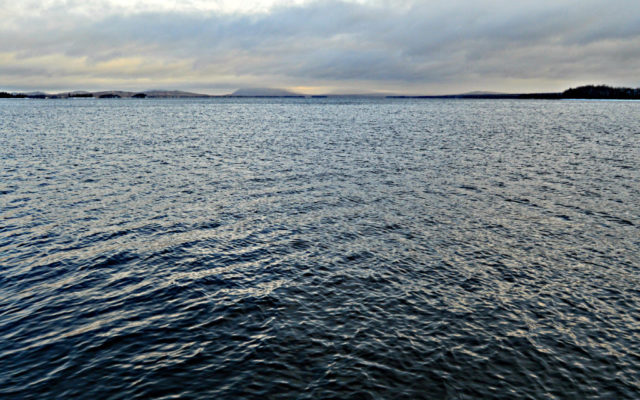
Update on the Moosehead Lake fishery (fall work)
By Tim Obrey, regional fisheries supervisor
Salmon are the only species MEIFW stocks in Moosehead Lake, and we’ve been able to slowly reduce the number over the years to just 5,000 spring yearlings annually. Each spring the hatchery trucks roll into the Junction Wharf, the Rockwood Boat Launch, and the Lily Bay Barn to unload their cargo. The fish spread their fins and travel throughout the lake over the coming years. They’re all clipped in the hatchery so we can tell which salmon are wild and hatchery origin with a quick glance. In Moosehead Lake, a hatchery salmon that can successfully avoid the fry pan and loons can live to age 4 or 5 before naturally shedding their mortal coil.
Our hatchery salmon are 8-10 inches long at the time of stocking and are immature. They typically mature at age 2. They behave much like their wild counterparts and “home†back to the stocking location at the onset of the spawning season. This gives fisheries managers a great opportunity to collect data on these prize gamefish by setting trapnets. Trapnets are used to live-capture fish so they can be examined and then released.
Fisheries staff have sampled landlocked salmon at the Junction Wharf stocking site each fall since 1976 to get a snapshot of the age and growth conditions of these fish. We can determine the age of the fish by the fin clips or by reading a scale sample under the microscope. We monitor trends in mean length and weight for each age class of salmon. We also calculate a “Condition Factor†which is simply a mathematical relationship between length and weight. Condition factors generally range from 0.6 to 1.2 for our salmonids. The higher the Condition Factor, the fatter the fish. We celebrate robustness and have a management goal of 0.85 for our salmon.
Recently, we’ve had some very good years for salmon growth. Our fish are fat and sassy. As you can see, we are well above our management objective (red line). There have been some bad years for growth too, and that is due to poor year classes of smelt that are the primary source of food for our salmon. We have a very strong year class of young smelt in the lake this year so we are hopeful that our salmon will be impressive over the next few years.
I think we can all agree that the fishing has vastly improved over the past 15 years since we thinned the lake trout population. But there is still work to be done. We need to keep our lake trout population in check to maintain the smelt abundance, good growth, and good survival. We encourage folks to harvest their limit of smaller lake trout in the summer and winter on Moosehead Lake. The bag limit is five lake trout; only one may be over 18 inches and all five may be less than 18 inches. This is where anglers can really help us successfully manage Maine’s largest lake!